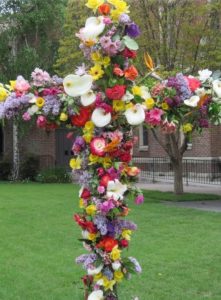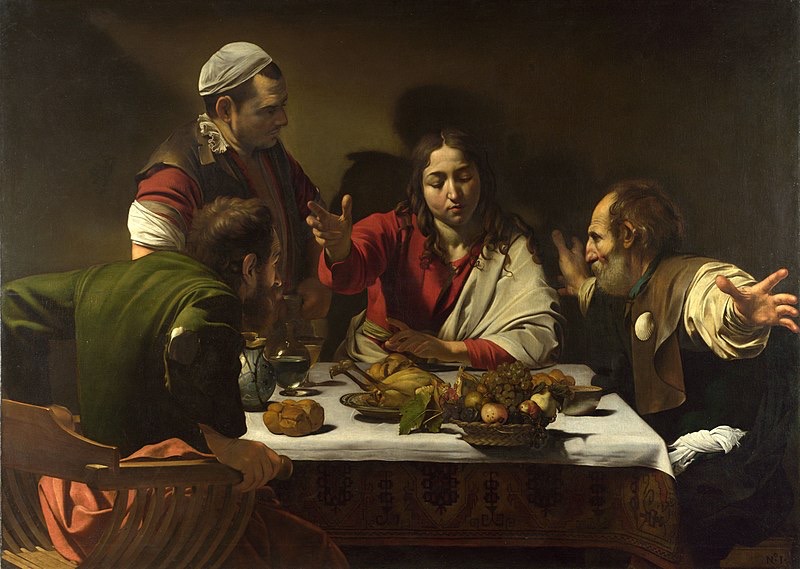by Christine Sine
The Easter season has begun and here in Seattle resurrection is in the air. Daffodils and tulips lift their heads to the warming sun. Trees are in bloom, apples, cherries, pears are all abuzz with bees and pollinators. All around me is the promise of abundance for all. It is this season, not Lent and Holy Week, that fills my heart with joy. No festival in the Christian calendar is more dramatic than Easter with its incredible contrast between the pain and agony of Easter Friday and the joy and celebration of resurrection Sunday. Now as we celebrate the joy, is a time to sketch out life as we believe it will be in God’s eternal world and do what we can to live into it.
I don’t believe God’s grand plan is war and violence with an end times cataclysm of death and destruction but rather a renewal of the earth and all its creatures and the restoration of the abundance, mutual concern and love of God’s original creation. The hope of the New Testament is this life-affirming promise of a new heaven and a new earth in which wholeness and abundance come for all creation. This is the hope that the Old Testament prophets looked forward to. It is the promise the apostles proclaimed igniting the early church with such fervor that believers radically reoriented their priorities. Today, too, we are invited to live into this resurrection-created world as we seek to follow a Christ who defeated death and transfigured the world with the Spirit of life and love. It is the resurrected Christ who invites us to join him in making the life of his resurrection-created world flourish in all dimensions of wholeness and shalom.
In his book, Surprised by Hope: Rethinking Heaven the Resurrection, and the Mission of the Church, N.T. Wright asserts that Christianity’s most distinctive idea is bodily resurrection. After his resurrection, Jesus was a flesh and blood person and Wright contends that we will be too. He further argues that if we truly believe this then it will impact the way we live our lives now. If God intends to renew all of creation and all of life – a process already begun in the resurrection of Jesus – then our responsibility as Christians is to anticipate this renewal by working for hope and healing in today’s world:
So how can we learn to live as wide-awake people, as Easter people?… In particular if Lent is a time to give things up, Easter ought to be a time to take things up…. If Calvary means putting to death things in your life that need killing off if you are to flourish as a Christian and as a truly human being, then Easter should mean planting, watering, and training up things in your life (personal and corporate) that ought to be blossoming, filling the garden with color and perfume and in due course bearing fruit.”
The good news of the gospel is that we don’t need to wait to see this new world of God’s wholeness and love come into being. As N.T. Wright asserts, the point that all the gospels make is that “Jesus is risen, therefore God’s new world has begun. Jesus is risen, therefore Israel and the world have been redeemed. Jesus is risen, therefore his followers have a new job to do. And what is that new job? To bring the life of heaven to birth in actual, physical earthly reality.”

Flowered CrossEmily Huff
The Easter season, this joyous season for celebrating all that is blossoming and flourishing in our lives lasts for 50 days culminating in the celebration of the festival of Pentecost. This is meant to be a season of joy as we celebrate both the resurrection of Christ and the many ways in which the resurrected Christ makes life flourish both in our personal lives and in the world around us.
What will God’s resurrection-created world look like? Obviously none of us can really know. However the prophets give is some wonderful glimpses. I love how Isaiah pictures it in Isaiah 65: 17-25
“Look! I am creating new heavens and a new earth,
and no one will even think about the old ones anymore.
18 Be glad; rejoice forever in my creation!
And look! I will create Jerusalem as a place of happiness.
Her people will be a source of joy.
19 I will rejoice over Jerusalem
and delight in my people.
And the sound of weeping and crying
will be heard in it no more.
20 “No longer will babies die when only a few days old.
No longer will adults die before they have lived a full life.
No longer will people be considered old at one hundred!
Only the cursed will die that young!
21 In those days people will live in the houses they build
and eat the fruit of their own vineyards.
22 Unlike the past, invaders will not take their houses
and confiscate their vineyards.
For my people will live as long as trees,
and my chosen ones will have time to enjoy their hard-won gains.
23 They will not work in vain,
and their children will not be doomed to misfortune.
For they are people blessed by the Lord,
and their children, too, will be blessed.
24 I will answer them before they even call to me.
While they are still talking about their needs,
I will go ahead and answer their prayers!
25 The wolf and the lamb will feed together.
The lion will eat hay like a cow.
But the snakes will eat dust.
In those days no one will be hurt or destroyed on my holy mountain.
I, the Lord, have spoken!”
The, as I read the gospel stories of Jesus I have a fairly good idea. Jesus doesn’t just reveal God to us, he also shows us what God’s new world is like. Through his words and actions we catch glimpses of a transformed world in which all barriers of race and class are removed. It transforms hate into love, scarcity into abundance, greed into generosity, violence into peace and oppression into justice and equality. In God’s new world all lines of separation are erased, the hungry are fed, the oppressed set free and we are invited into a new creation of wholeness and healing, of redemption and renewal.
Just as Jesus’ life was inspired by the in-breaking of God’s resurrection world, so were the lives of the early disciples. They left homes and jobs and family. They turned their backs on the values of Roman and Greek culture and embraced God’s new world and its values of love and mutual care because they believed that in the coming of Christ this new world had broken into ours. They believed that their primary allegiance was no longer to the kings and rulers of this world but to Christ. Through baptism they had become citizens of God’s new world. Their vision became this dream of shalom, wholeness and restoration fulfilled in Christ – a vision of all people including the dispossessed, the excluded and the needy drawn under Christ’s lordship into a single family. Their vision became one in which all persons find a place of abundant provision in a new community that is loving, caring and mutually supportive. They saw all humanity as heirs of a single hope and bearers of a single destiny – the restoration, care and management of all God’s creation in a new heaven and a new earth. Their purpose had become the in-breaking of this new world into the lives of those they met and interacted with.
This is the same vision and purpose that has inspired followers of Christ throughout the ages. It motivated the Celtic saint Brigit to feed thousands each day from the monastery at Kildare and led Francis of Assisi to give up his wealth and privilege to work amongst the poor. It inspired John Wesley in the eighteenth century to not only preach to the poor but to become a leader in many social justice issues. It led William Wilberforce to fight against slavery and Elizabeth Fry to visit prisons in nineteenth century England.
Incredibly, Jesus also invites us to join this great clouds of witnesses throughout the ages and join in the exciting drama of seeing the world changed now in partial ways in anticipation of the day when Christ returns and all things are indeed made whole.
Over the weekend, inspired by Scott Erickson’s Stations of the Resurrection I searched the internet for others who have interpreted the season of Easter with images of hope and promise. Evidently The Stations of the Resurrection follows a spiritual journey with Christ that takes one through fourteen of the events of His post-Resurrection life on earth. Though this was not quite what I was looking for, it was a great place to start. Evidently, in the early Church this practice was known as the Via Lucis, or Way of the Resurrection. It invites participants to walk along a path of transforming joy by following in the footsteps of the Risen Christ and his friends.
Here is a little of what I discovered. I suggest you read Isaiah 65:17-25 several times and then spend time reflecting on these images.
Stations of the Cross and Resurrection by Mary Button. This was one of my best finds which I spent lots of time reflecting on yesterday.
Stations of the Resurrection from the Roman Catholic Diocese of Calgary Canada is great place to visit with several links to stations of the Resurrection both for adults and kids.
Ian McKillop’s 20 paintings of the Stations of the Resurrection which will be hung in Leicester Cathedral are very compelling.
This downloadable Stations of the Resurrection from Church Union in the UK is also a great find.
May we all begin this Easter season with the desire to enter into God’s resurrection world and grow into the people God wants us to be.
Note: As an Amazon Associate I receive a small amount for purchases made through appropriate links above.

